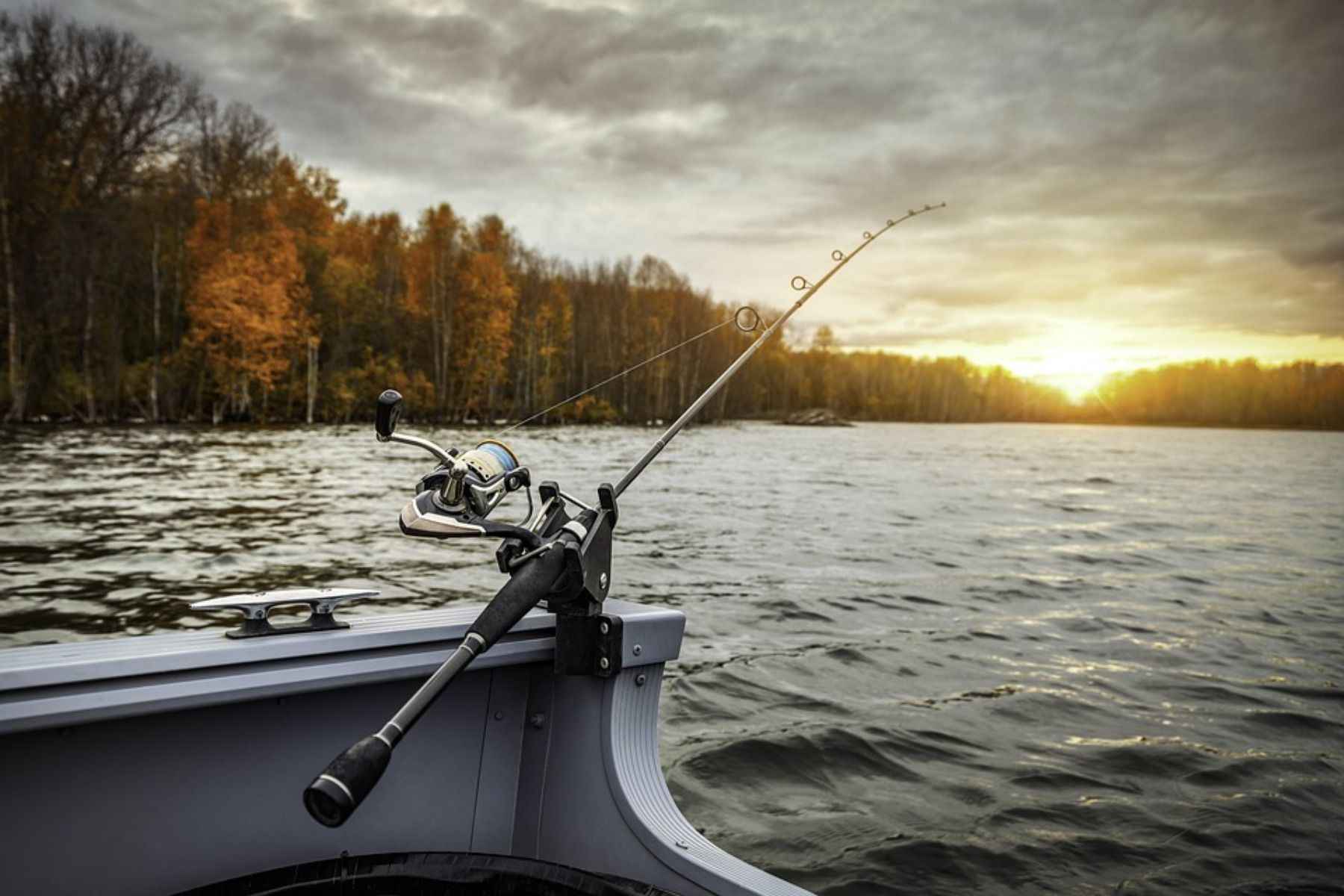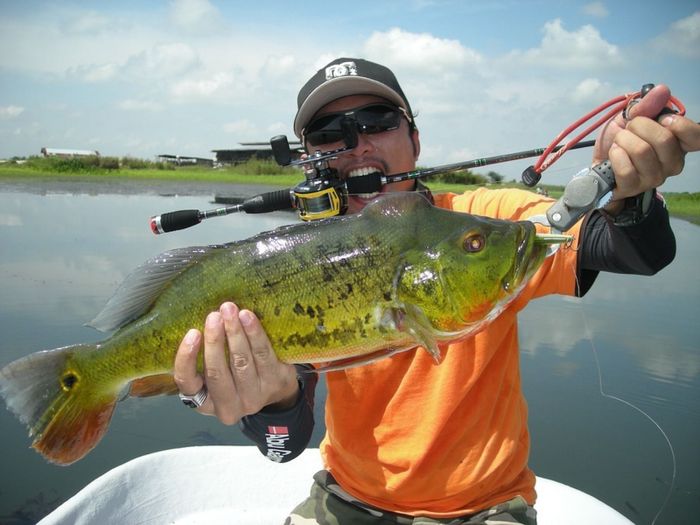Techniques for Catching Peacock Bass
Here are the best techniques to catch peacock bass. Be sure to read this before your next bass adventure.

The peacock bass is a freshwater fish well-known for its unique colors, with a dominantly yellow body and vertical black bars running down its side. The fins on the upper side of its body are green, while the bottom fins are orange, and they have a unique split-colored caudal fin. It has a distinct single black spot on the upper lobe of the tail which is referred to as the “peacock eye”, and hence its name.
This fish is from a family of large cichlids native to South America, with Panama and Brazil as one of the top destinations to find it. However, it was introduced into Florida in 1984 to help fight against invasive species, and today can be found swimming all over Miami’s canal waters.
The peacock bass is sometimes called by its Brazilian name tucunaré, or Spanish name, pavon. It’s not related to the largemouth bass, despite the similarity in their names, shape, and prominent jaw.


1.Gear Up
Despite its notoriety as a hard-fighting fish, you don’t need to buy a special rig to angle for the peacock bass. If you’ve fished for largemouth bass before, you’re pretty much all set up.
A 6 to 7-foot medium rod will do the job as an all-purpose tackle. You can pair it with a medium-action reel if using live bait and a fast-action one for artificial lures. Finish it up by spooling your reel with a 15-20 lb braided line or 20-30lb clear fluorocarbon leader with a 6 to 8-pound test, depending on the terrain you’re fishing from.
2. Keep it Live
Live bait is best for peacock bass – any species of panfish will work, although golden shiners have been a local favorite attached to a 1/0 or 2/0 circle hook. Peacocks will prefer live bait since they are hunters by nature and will gravitate easier to something alive and writhing. It’s best to use a small bobber with live bait with a two to four-foot depth range so that your bait can move.

3. Lure Them In
Peacock bass take to artificial lures, although you should only use them when targeting peacock bass at specific depths, so having some sinkers, suspending, and floating lures might come in handy. However, this fish is magnetically drawn towards action, so topwater lures like surface poppers, propeller lures, or minnow-like crankbaits have been known to be effective. Peacocks are not particularly picky and will be attracted to anything that’s shining and active – just remember to match the lure color with the general ambient color of the water.
While lures and bait around three to five inches in length will attract the larger fish, it’s not as consistent, and peacock bass will strike more aggressively at smaller sizes. They’ve also shown a preference for flies such as Dahlberg divers and epoxy minnows, and marabou stripped quickly is an angler’s favorite among others. The only thing you should stay away from is using plastic worms.
4. Undercover
Peacock bass love shaded spots and rocky areas near structures such as bridges. Casting your line near bridge pilings, fallen trees, lily pads, drop-offs, and canal ends is your best bet. Ironically, it's best to catch this fish when the sun is out and the water is warmer since it'll use structures for cover to ambush their prey. If you stroll along the banks of canals or ponds, you can sight fish around these structures or cast a few tube lures near the shoreline to test the water.
5. Line and Sinker
Whether you decide to fish from the shore or go slow-trolling along the canal, there are various techniques in catching the peacock, and they are all fairly standard and simple.
The most basic and most productive is actually freelining or handlining without a rod and reel. Simply tie a leader to your mainline utilizing a Uni to Uni knot with a 1/0 or 2/0 hook on the end. Load up some peacock shiner and throw it in the water. If your waters have a current, adding a small split shot to anchor it down a little bit can help, especially in shallower waters.
If you want to go deeper, you’ll need to go with your medium to light tackle, whether with live bait or artificial lures. One thing you need to remember is to not set the hook on the fish’s first pass since peacock bass will come in to investigate first by hitting the lure. They’ll then circle back around and take hold of it on the second go, which is when you’ll want to set the hook quickly. If they don’t come around for the second pass, you can try getting their interest piqued again with a diving lure.
Once you catch a peacock, it’s not unusual to find others immediately appearing in the area you just fished in – they are naturally predatory and curious of movement so expect larger fish to come and investigate. You could try having two rigs ready – one for the initial catch to lure in the bigger fish, and the other to snag the trophies. However, since peacock bass move in small schools, you should always be ready for an abrupt feeding frenzy, which this fish is particularly known for. This species can compete heavily for food in schools, so you need to move your bait fast – the quicker you strip your line, the more ready they are to grab your hook.
Lastly, don’t underestimate the strength of the peacock bass. Always keep an eye on your drag and don’t go too tight, which can easily result in a snapped line. They can quickly hide underneath cover and pull your line aggressively with it, so make sure to give some slack, and let it fight until it’s ready to give up.




